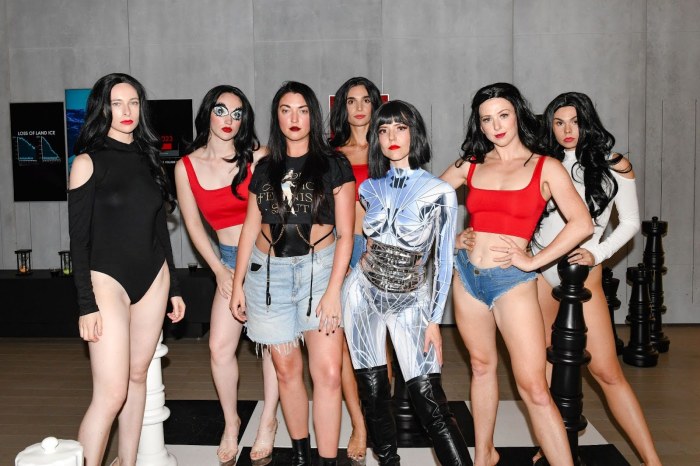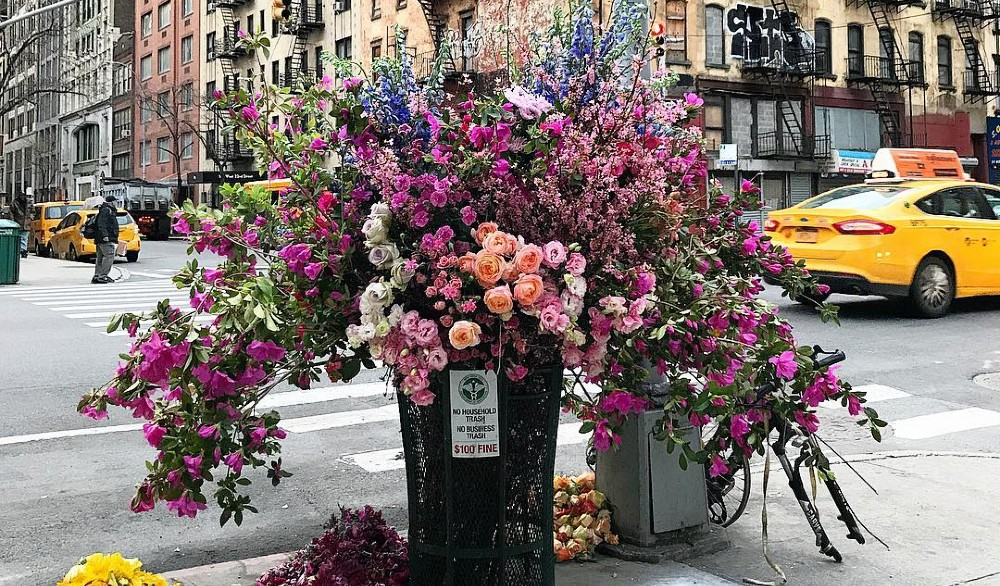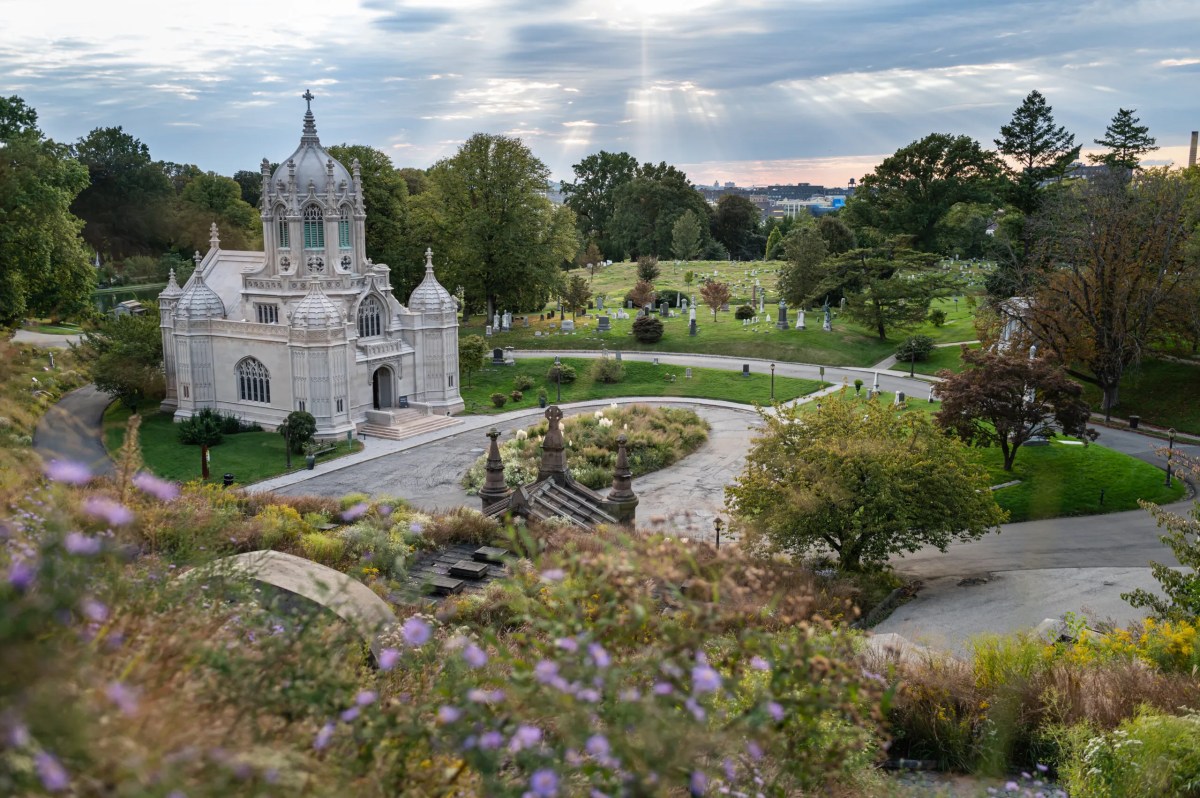BY LINDSAY BU | Visual art and poetry may not always share common ground, but they do exhibit commonalities. Both rely heavily on the audience to interpret what is presented before them, and to consider the full story behind a single image or a line. But grappling with visual art and poetry is very different when the two are combined.
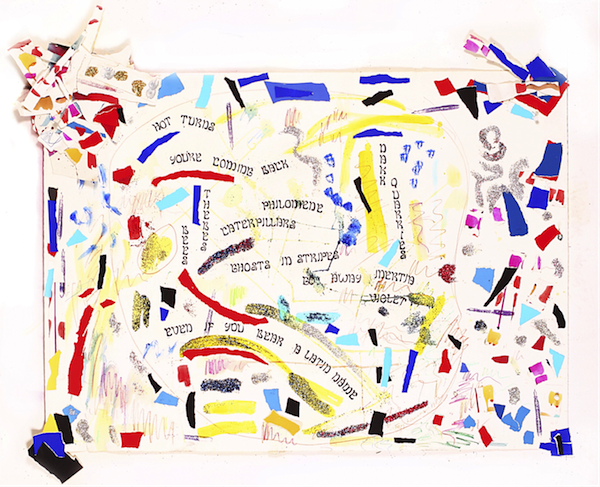
At Poets House (10 River Terrace), the exhibit “Metamorphosis: The Collaboration of Poet Barbara Guest & Artist Fay Lansner” features a creative dialogue between the two women, by presenting a number of Lansner’s portraits of Guest, as well as her charcoal and pastel pieces that incorporate lines of Guest’s poetry.
The poetry of Barbara Guest (1920–2006) began to rise in prominence during the late ’50s, when she was considered among the New York School of Poets — whose other members included John Ashbery, Frank O’Hara, and James Schuyler.
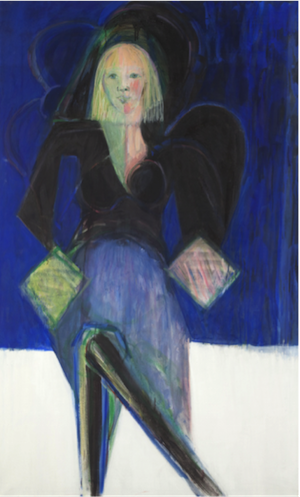
Influenced by surrealism and abstract expressionism, Guest’s work is characterized by the lyricism and musicality of her words; a painterly impulse that evokes gentle but poignant images. Fay Gross Lansner (1921–2010) was a prolific member of the abstract expressionist movement. Affiliated with well-known artists such as Willem de Kooning and Joan Mitchell, Lansner was committed to figurative painting and symbolic imagery.
Though a definitive timeline of how their friendship began is unclear, the first visual record of their relationship dates to the 1950s, with a series of portraits Lansner completed of Guest. One of the large oil portraits from the ’70s (“Portrait of Barbara Guest”) is on view at the Poets House exhibit. In it, Guest — clad in a lavender skirt and black top — sits with her legs crossed against a dark blue backdrop with visible paint strokes. Her hands are pink squares, and Guest’s straw-blonde hair contrasts with the striking blue behind her.
According to Poets House Artistic Director Stephen Motika, their relationship might have been spurred by frequent interactions in the professional art world (they both published reviews in ARTnews, a popular art magazine), as well as the similarities in their personal lives.
“They’re these two friends who circled each other creatively in this world together, and had a great deal of respect for each other’s work. They both also had daughters, and they lived in Long Island for part of their careers. I would imagine that that’s maybe how their friendship really bloomed,” Motika observes.
It was only in 1982, however, that their collaborations began to take shape, with Guest’s poem “Tessera” inspiring multiple artworks by Lansner.
Lansner’s “Sadness and Felicity” (1989), for instance, is a work of charcoal and stamps on paper, depicting a woman with curly hair coiffed in an up-do, and a large bird sitting atop the right side of her head. The woman’s expression is not easy to decipher, Her large eyes look rather melancholic, but her mouth upturns into the slightest smile. Around this image of her face are different lines scrawled in script from Guest’s poem, such as “I’m here in the land of sunbeams/and silk oak,” and “Sadness and felicity/you’re coming back.” What’s perhaps most interesting is the liberty Lansner took in re-creating these lines — the words are clustered together in a way that does not preserve their original line breaks. Perhaps this was an issue of space, but perhaps it is intentional.
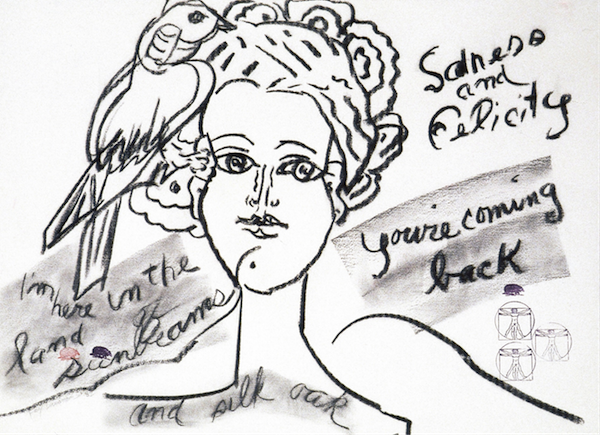
This careful selection of which lines to present in the charcoal work gives the viewer an opportunity to truly consider the significance, the ebb and flow, of each word. The curls of the script — from the shaky “s” to the loopy “y” — bring the weighty burden behind the word “sadness” to life. Even more so than translators of poetry, Lansner serves as a determined broker between Guest and the reader — one who can decide to emphasize certain lines, or make the reader subconsciously experience certain words differently based on how they are presented.
Yet, the title of the exhibit, “Metamorphosis,” is especially suited for this series of art on “Tessera.” Guest has another rendition of “Sadness and Felicity” (1990s), among many others, that is startlingly different than the aforementioned version. This charcoal and pastel on paper exudes life and color. Again, Lansner pulls excerpts of Guest’s poem, but here they seem to be the focus. Various lines, taken from different parts of the poem, are written in seemingly random diagonals. There are pink cloud-like shapes drawn throughout the page, thick, bright yellow lines underneath certain words, small patches of teal grass in corners, and a picture of a black dandelion resting in a skinny bottle at the bottom of the canvas. It’s a rather strange combination — the whimsical colors, reminiscent of Easter Sunday and baby showers, and the actual words themselves.
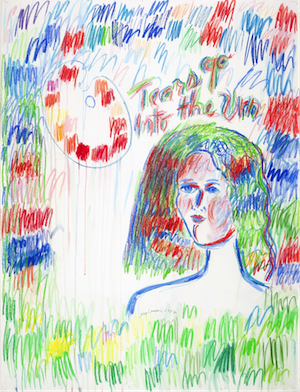
“Barbara is known for her abstract work. It’s not like Frank O’Hara; it’s not like images of New York or anything. It’s more of an internal and modern work, inspired by other poets like H.D. [Hilda Doolittle]. But these paintings [by Lansner] are often playful, and colorful, and live,” says Motika, “and it’s like these two temperaments are coming together.”
Lansner’s artwork is on display throughout the second floor. Poets House has an intimate exhibition space ideal for showing manuscripts and small works on paper; larger works must be installed in the reading and conference rooms. Motika stated that the exhibition’s layout gives appropriate space to the various chronologies, as well as the themes explored through the artists’ productive relationship.
“Barbara had a remarkable body of work. It grew sharper — its lyricism deepened and became unparalleled in American poetry,” says Motika. “We don’t know exactly why they decided to make so many renditions of the same poem [“Tessera”], but I do think it’s really interesting when you work and respond to something visual very differently [than you would with text]. I can’t think of that many cases where there’s this interesting exploration or reverberation of different textures and colors in relation to words.”
“Metamorphosis: The Collaboration of Poet Barbara Guest & Artist Fay Lansner” is on view through Apr. 23, at Poets House (10 River Terrace, at Murray St.). Hours: Tues.–Fri., 11 a.m.–7 p.m.; Sat., 11 a.m.–6 p.m. Closed Sun. & Mon. Free admission. Call 212-431-7920 or visit poetshouse.org. For artist info, visit faylansner.com.











